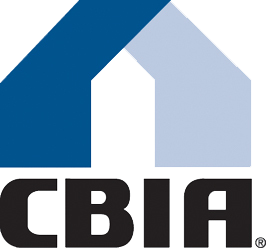ByAli Sahabi of Optimum Group, LLC
President, Building Industry Association (BIA) Baldy View Chapter
If you are shopping for a new home or new appliances for an existing home, you have doubtless noticed that the biggest theme in homebuilding over the past decades has been “going green” – making our homes and lifestyles better harmonize with our environment. However, the key to going green is staying green and in a year with unusually dynamic weather such as we have experienced this year, it will be especially important for homeowners to protect their investments in their home and appliances by paying extra attention to their HVAC (heating, ventilation and air-conditioning) units. A little attention now could result in big savings on service and/or energy costs down the road.
So while the days are still long and dry as we head into autumn, start now by preparing a maintenance schedule to protect your investment, your comfort and your safety. Remember, whether you have a central air-conditioning system or room air-conditioners, the maintenance is basically the same. Unless you have a much older system, there is no need shut down your house’s power for the few minutes it will take to check and clean your unit but make sure you unplug room air-conditioners before you start.
Dirty filters are a common cause of air-conditioner problems and inefficient operation. Filters should generally be cleaned or replaced every four to six weeks. Begin by vacuuming the front grills, air registers and return air vents. Remove the grill on the main unit and all window units to check the air filter. Before removing the filter, notice how it is held in place so you can reinstall it correctly. Many filters simply slide in and out or are draped from prongs on the air conditioner body or the back of the grill. Be sure to read the filter packaging to see which side faces up. To clean a washable filter, brush it free of lint, and then wash it in warm soapy water. Squeeze and let the filter dry completely before reinstalling it.
Your next step will be to clean your fins and coils. While the filter is out, check the condition of the evaporator fins or coils (which are normally exposed by removing the filter). Warm air drawn into the air conditioner passes through the filter and then over the fins or coil, where it is cooled and blown back into the room. Vacuum the fins or coils carefully, using a soft brush attachment. Avoid bending the fins. If damaged, they may block the flow of air and cause the air conditioner to whistle. To straighten bent fins, insert a putty knife between them and pry gently.
Beneath the fins or coils there is normally a small drain hole to channel condensed water to a drip pan in the rear of the air-conditioner. Check to see if the unit smells musty. A musty odor is a sign of mold or bacteria growth in the water drip pan. If the smell persists after the drain hole has been cleared and the unit cleaned, professional servicing may be necessary. Then, carefully poke a wire or straightened paper clip through the drain hole to clear it, especially if you notice water. It should drain out right away. If a window unit doesn't drain properly, use a carpenter's level to check the mounting of the unit. It should slope at least a quarter of an inch downward toward the rear.
For maximum cooling, the outdoor part of an air-conditioner should be shaded from the sun. Trees, shrubs or an awning can provide the shade, but they must be far enough away to allow warm air to escape. Foliage should be trimmed back at least two feet, and even more in corners where air is still.
Even if everything goes smoothly, remember that like any major appliance in your home, your HVAC system should be checked and cleaned periodically by a professional. See your owner's manual for the recommended frequency of this care.
The BIA Baldy View Chapter seeks to advance the opportunity to attain the American Dream of home ownership. For additional information on homebuying, home improvements or the benefits of homeownership, go to www.biabuild.com on the web.

















